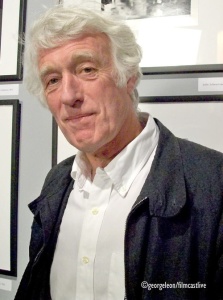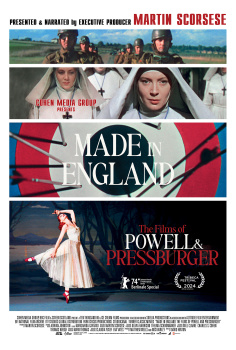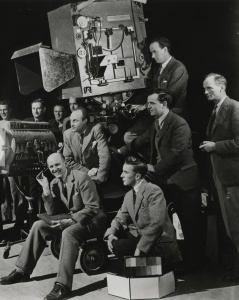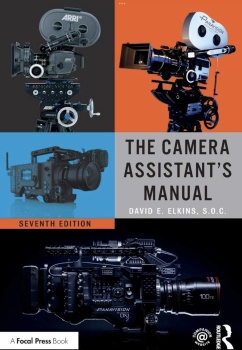Prompt. Compose. Render. Repeat: The New Language of Cinematography in the Age of AI
By George Leon
Over the course of two days, from the comfort of my screen, I attended via livestream, a gathering that might one day be considered a turning point in the evolution of visual storytelling. The American Society of Cinematographers hosted Visual Artistry in the Age of AI, a summit presented by the ASC’s Motion Imaging Technology Council. It assembled a compelling mix of ASC veterans, legal scholars, technologists, and AI artists to probe an urgent question: How will generative AI transform the art, craft, and ethics of cinematography?
From left to right, Michael Goi ASC, Moderator, Mandy Walker ASC President, Maddie Hong,
Sheena Dugall VFX, Liz Mossessian, Ellenor Argyropoulos, Dante Spinotti ASC AIC,
Patrick Cady ASC, Matthew Wenhardt, Runway
This wasn’t a theoretical discussion. It was deeply practical—demonstrations of Runway Gen-4 integrated with Comfy UI and LoRA fine-tuning workflows, walkthroughs of image sequencing, and text-to-video pipelines that rival early previs, and panels that didn’t shy away from the creative, legal, and philosophical quandaries now at our doorstep. Adobe, Nvidia, and Google showcased tools that many attendees were using—some for the first time—to generate frames, moodboards, transitions, and, yes, entire sequences.
A sense of both awe and resistance floated through the Clubhouse. For many veteran cinematographers, whose muscle memory is calibrated to light meters and emulsions, AI may still feel foreign. And yet, younger cinematographers are entering the field fluent in these tools—able to prototype a shot, test a lighting scenario, or design an entire storyboard without picking up a lens. As Dante Spinotti, ASC, remarked during one session: “We’re not being replaced. We’re being challenged.”
The ethical dimension loomed large. Can a generative model trained on copyrighted material ever be truly original? Who owns the final frame—the prompt engineer, the AI, or the cinematographer who supervised the result? Legal experts from the “AI and the Law” panel made it clear: we are still writing the rules. The summit provided case studies and emerging precedents but emphasized that this is an evolving terrain—one that must be navigated with both curiosity and caution.
A parody of the history of influencers, inspired in Mel Brooks humor and prompted
with Veo3/Audio, demonstrates the capabilities of Generative AI.
What was especially telling was the comparison between legacy previs tools and what AI now makes possible. With the right prompting, models like Midjourney, Leonardo, and even Google’s Veo3 can simulate depth of field, atmospheric tone, and composition that feel uncannily filmic. These tools are not merely gimmicks; they are storyboarding partners, lookbook generators, and creative accelerants.
Go behind “ANCESTRA” combining Veo with live-action filmmaking Google Deep Mind partnered
with Darren Aronofsky, Eliza McNitt and a team of more than 200 people to make a film
using Veo and live-action filmmaking. Outstanding!
It’s worth noting that the summit intentionally steered clear of virtual production and LED volumes—not out of oversight, but because those tools are already widely adopted. The focus instead was on the bleeding edge: generative AI as a narrative engine, a planning tool, and possibly, a cinematographic collaborator.
AI VIDEO GENERATORS + AI VFX
These tools create Al generated video, based on a text prompt, or an image, or another video, or a mix of either. To create AI VFX (Al Visual Effects) run an image to video workflow with a still frame from your footage and prompt for the desired effect. Some Al video generators allow you to have starting frame and ending frame to achieve more consistency.
At its core, the summit reaffirmed something ASC has always stood for: education. From their Cinematography Master Classes to summit panels like this one, the ASC remains a guiding light in how the craft adapts to change. And while skepticism remains—especially among those of us who still remember threading celluloid—this much is clear: generative AI is not a passing phase. It is a new chapter in cinematic language.
The question is no longer whether cinematographers should use AI, but when, where, and how. For some, it may remain in preproduction—helping visualize a scene before scouting begins. For others, it might augment VFX, lighting previs, or even assist in marketing and distribution. But for all of us, seasoned or new, the need to understand it is urgent.
Because if the next revolution in filmmaking is already here, it will not wait for permission to roll camera.
Generative AI apps should not be the only tools under your shed to develop great results making your next AI blockbuster. Chatbots are the starting point, the brain storm doodle on a napkin, the highest testosterone wiki, the lube oil for your squeaky mental gears, your personal Socrates, Sherlock, Michelangelo, Locke, Einstein, all rolled into one.. now days it may provide you even with “Happy Accidents” when brush stroking your blank canvas. Follow this easy steps below, as advised by Reddit’s r/ThinkingDeeplyAI for better results in your next creative endeavor.
1. The Content Creator's Goldmine
Analyze viral thumbnail styles and recreate them for your own content
Study what makes certain images "pop" on social media
2. The Learning Accelerator
Understand how specific visual effects are achieved in AI art
Learn prompt engineering 10x faster by studying successful outputs
The AI Showdown: Who Does It Best?
Claude, ChatGPT, or Gemini?
Claude (Anthropic)
INSANELY detailed analysis - catches subtle elements others miss
Explains the "why" behind visual choices
Gives you multiple prompt variations to try
Best at understanding artistic styles and techniques
ChatGPT
Solid all-rounder, very reliable
Great at technical/product images
Sometimes oversimplifies complex artistic styles
Excellent at suggesting specific model parameters
Gemini
Fast and free (huge plus!)
Good for basic prompt extraction
Sometimes misses nuanced details
Best for quick-and-dirty prompt ideas
More Tips:
- Be Specific: Don't just say "analyze this image." Say "Give me a detailed prompt that would recreate this image's style, lighting, composition, and mood".
- Ask for Variations: Request 3-5 different prompts - each AI interprets differently and you'll get more ideas.
- Layer Your Learning: Use one AI to analyze, another to refine the prompt, and a third to suggest improvements.
- Build a Prompt Library: I keep a spreadsheet of successful prompts organized by style/purpose. Game changer.
- Combine with Style References: Extract prompts from multiple images and combine elements for unique results


















































































